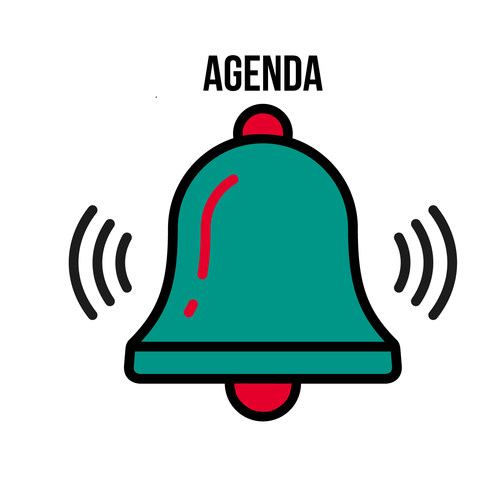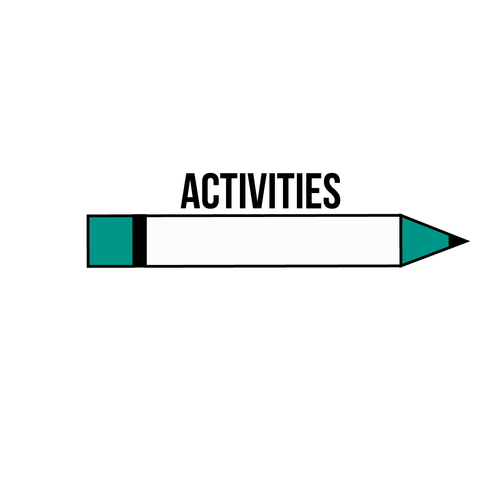6.4: Understand Chronic Diseases
- Page ID
- 2407
\( \newcommand{\vecs}[1]{\overset { \scriptstyle \rightharpoonup} {\mathbf{#1}} } \)
\( \newcommand{\vecd}[1]{\overset{-\!-\!\rightharpoonup}{\vphantom{a}\smash {#1}}} \)
\( \newcommand{\id}{\mathrm{id}}\) \( \newcommand{\Span}{\mathrm{span}}\)
( \newcommand{\kernel}{\mathrm{null}\,}\) \( \newcommand{\range}{\mathrm{range}\,}\)
\( \newcommand{\RealPart}{\mathrm{Re}}\) \( \newcommand{\ImaginaryPart}{\mathrm{Im}}\)
\( \newcommand{\Argument}{\mathrm{Arg}}\) \( \newcommand{\norm}[1]{\| #1 \|}\)
\( \newcommand{\inner}[2]{\langle #1, #2 \rangle}\)
\( \newcommand{\Span}{\mathrm{span}}\)
\( \newcommand{\id}{\mathrm{id}}\)
\( \newcommand{\Span}{\mathrm{span}}\)
\( \newcommand{\kernel}{\mathrm{null}\,}\)
\( \newcommand{\range}{\mathrm{range}\,}\)
\( \newcommand{\RealPart}{\mathrm{Re}}\)
\( \newcommand{\ImaginaryPart}{\mathrm{Im}}\)
\( \newcommand{\Argument}{\mathrm{Arg}}\)
\( \newcommand{\norm}[1]{\| #1 \|}\)
\( \newcommand{\inner}[2]{\langle #1, #2 \rangle}\)
\( \newcommand{\Span}{\mathrm{span}}\) \( \newcommand{\AA}{\unicode[.8,0]{x212B}}\)
\( \newcommand{\vectorA}[1]{\vec{#1}} % arrow\)
\( \newcommand{\vectorAt}[1]{\vec{\text{#1}}} % arrow\)
\( \newcommand{\vectorB}[1]{\overset { \scriptstyle \rightharpoonup} {\mathbf{#1}} } \)
\( \newcommand{\vectorC}[1]{\textbf{#1}} \)
\( \newcommand{\vectorD}[1]{\overrightarrow{#1}} \)
\( \newcommand{\vectorDt}[1]{\overrightarrow{\text{#1}}} \)
\( \newcommand{\vectE}[1]{\overset{-\!-\!\rightharpoonup}{\vphantom{a}\smash{\mathbf {#1}}}} \)
\( \newcommand{\vecs}[1]{\overset { \scriptstyle \rightharpoonup} {\mathbf{#1}} } \)
\( \newcommand{\vecd}[1]{\overset{-\!-\!\rightharpoonup}{\vphantom{a}\smash {#1}}} \)
\(\newcommand{\avec}{\mathbf a}\) \(\newcommand{\bvec}{\mathbf b}\) \(\newcommand{\cvec}{\mathbf c}\) \(\newcommand{\dvec}{\mathbf d}\) \(\newcommand{\dtil}{\widetilde{\mathbf d}}\) \(\newcommand{\evec}{\mathbf e}\) \(\newcommand{\fvec}{\mathbf f}\) \(\newcommand{\nvec}{\mathbf n}\) \(\newcommand{\pvec}{\mathbf p}\) \(\newcommand{\qvec}{\mathbf q}\) \(\newcommand{\svec}{\mathbf s}\) \(\newcommand{\tvec}{\mathbf t}\) \(\newcommand{\uvec}{\mathbf u}\) \(\newcommand{\vvec}{\mathbf v}\) \(\newcommand{\wvec}{\mathbf w}\) \(\newcommand{\xvec}{\mathbf x}\) \(\newcommand{\yvec}{\mathbf y}\) \(\newcommand{\zvec}{\mathbf z}\) \(\newcommand{\rvec}{\mathbf r}\) \(\newcommand{\mvec}{\mathbf m}\) \(\newcommand{\zerovec}{\mathbf 0}\) \(\newcommand{\onevec}{\mathbf 1}\) \(\newcommand{\real}{\mathbb R}\) \(\newcommand{\twovec}[2]{\left[\begin{array}{r}#1 \\ #2 \end{array}\right]}\) \(\newcommand{\ctwovec}[2]{\left[\begin{array}{c}#1 \\ #2 \end{array}\right]}\) \(\newcommand{\threevec}[3]{\left[\begin{array}{r}#1 \\ #2 \\ #3 \end{array}\right]}\) \(\newcommand{\cthreevec}[3]{\left[\begin{array}{c}#1 \\ #2 \\ #3 \end{array}\right]}\) \(\newcommand{\fourvec}[4]{\left[\begin{array}{r}#1 \\ #2 \\ #3 \\ #4 \end{array}\right]}\) \(\newcommand{\cfourvec}[4]{\left[\begin{array}{c}#1 \\ #2 \\ #3 \\ #4 \end{array}\right]}\) \(\newcommand{\fivevec}[5]{\left[\begin{array}{r}#1 \\ #2 \\ #3 \\ #4 \\ #5 \\ \end{array}\right]}\) \(\newcommand{\cfivevec}[5]{\left[\begin{array}{c}#1 \\ #2 \\ #3 \\ #4 \\ #5 \\ \end{array}\right]}\) \(\newcommand{\mattwo}[4]{\left[\begin{array}{rr}#1 \amp #2 \\ #3 \amp #4 \\ \end{array}\right]}\) \(\newcommand{\laspan}[1]{\text{Span}\{#1\}}\) \(\newcommand{\bcal}{\cal B}\) \(\newcommand{\ccal}{\cal C}\) \(\newcommand{\scal}{\cal S}\) \(\newcommand{\wcal}{\cal W}\) \(\newcommand{\ecal}{\cal E}\) \(\newcommand{\coords}[2]{\left\{#1\right\}_{#2}}\) \(\newcommand{\gray}[1]{\color{gray}{#1}}\) \(\newcommand{\lgray}[1]{\color{lightgray}{#1}}\) \(\newcommand{\rank}{\operatorname{rank}}\) \(\newcommand{\row}{\text{Row}}\) \(\newcommand{\col}{\text{Col}}\) \(\renewcommand{\row}{\text{Row}}\) \(\newcommand{\nul}{\text{Nul}}\) \(\newcommand{\var}{\text{Var}}\) \(\newcommand{\corr}{\text{corr}}\) \(\newcommand{\len}[1]{\left|#1\right|}\) \(\newcommand{\bbar}{\overline{\bvec}}\) \(\newcommand{\bhat}{\widehat{\bvec}}\) \(\newcommand{\bperp}{\bvec^\perp}\) \(\newcommand{\xhat}{\widehat{\xvec}}\) \(\newcommand{\vhat}{\widehat{\vvec}}\) \(\newcommand{\uhat}{\widehat{\uvec}}\) \(\newcommand{\what}{\widehat{\wvec}}\) \(\newcommand{\Sighat}{\widehat{\Sigma}}\) \(\newcommand{\lt}{<}\) \(\newcommand{\gt}{>}\) \(\newcommand{\amp}{&}\) \(\definecolor{fillinmathshade}{gray}{0.9}\)
National Health Education Standards (NHES)
- 1.12.2 Describe the interrelationships of emotional, intellectual, physical, social, environmental, and spiritual health when coping with asthma, cancer, diabetes, heart disease, and obesity.
- 7.8.2 Demonstrate healthy practices and behaviors that will maintain or improve the health of self and others who have asthma, cancer, diabetes, heart disease, and obesity.

- Instruction: In a group or think-pair-share format, have participants discuss the following questions. Acknowledge those who have progressed toward their goal(s) and encourage anyone who wants to change or modify their goal to get 1:1 support.
- Share: Let’s discuss our SMART Goals.
- How is it going with your current SMART goal?
- What are some ways you can improve progress towards your goal? (Grows)
- What are some ways you are doing well with progress towards your goal? (Glows)

- Understand how chronic diseases can affect people’s lives.
- Understand that a person with chronic disease must be responsible for protecting their own health.

- Five (5) poster boards
- Markers
- Five (5) Dive into the Facts Handouts
- Five (5) laptops with disease videos.
- Paper

[As defined by the American Cancer Society, n.d.; American Heart Association, 2017; Asthma and Allergy Foundation of America, 2011; CDC, 2016; CDC, n.d.; National Cancer Institute, n.d.; NUH, NIDDK, 2017; Obesity Action Coalition, n.d.; World Health Organization, n.d.]
- Cope: To deal with problems and difficult situations and try to come up with solutions.
- Asthma: A disorder of the lungs that can cause wheezing, difficulty breathing, coughing, and tightness in the chest. [Asthma and Allergy Foundation of America, 2011].
- Cancer: A term for disease in which abnormal cells divide uncontrollably and can attack nearby tissues. [National Cancer Institute, n.d.]
- Chronic disease: A human health condition that lasts over a long period of time. [NIH, 2016]
- Diabetes: A disease that occurs when your blood glucose, also called blood sugar, is too high [NUH, NIDDK, 2017].
- Heart Disease: Refers to several types of a heart condition; coronary artery disease, arrhythmia, heart valve problems, and heart failure [CDC, n.d.].
- Heart Attack: Occurs when the blood flow to a part of the heart is blocked by a blood clot. [AHA, 2017].
- Stroke: When a blood vessel that feeds the brain gets blocked by a blood clot. [AHA, 2017].
- Atherosclerosis: A condition that develops when plaque builds up in the walls of arteries [AHA, 2017].
- Obesity: A condition that is associated with having excess body fat, contributed by genetic and environmental factors. [OAC, n.d.].
- Risk Factor: Any attribute, characteristic or exposure of an individual that increases the likelihood of developing a disease or injury [WHO, n.d.].

- Do Now
- What is a Chronic Disease?
- Dive into the Facts
- Lower Your Risks
- Exit Ticket

Do Now:
- Instruction:
- Have participants answer the following questions on their worksheet or by sharing out loud.
- What is a chronic disease?
- Do you know anyone who has a disease?
- How do you cope when someone you know has a disease?
- Have participants answer the following questions on their worksheet or by sharing out loud.
- Share:
- To cope means to deal with problems and difficult situations and try to come up with solutions.
- Chronic disease is a human health condition that lasts over a long period of time.
- By having a healthy lifestyle and regularly getting checked by your primary care physician you can prevent chronic diseases. If you already have a disease, you can learn how to best control the symptoms.
- The top five (5) chronic diseases include heart disease, cancer, diabetes, lung disease, and obesity.
- Chronic diseases are responsible for seven (7) in ten (10) deaths among Americans each year, and the vast majority of health care costs [CDC, 2017]
Good to Know: What is Chronic Disease?
- Share:
- Chronic diseases can make it difficult to do a lot of things we like to do because we may need to take medicine before or after we exercise, we may not always feel up to doing things like taking a walk or going out with our family and friends. [IDHP, n.d.].
- We can control some of the symptoms and in some cases even prevent the disease altogether by [APHA, n.d.]:
- Doing physical activity
- Eating healthy
- Not smoking
- Avoiding alcohol consumption
- Now we will discuss some examples of common chronic diseases.
- Asthma:
- A disorder of the lungs that can cause wheezing, difficulty breathing, coughing, and tightness in the chest [Asthma and Allergy Foundation of America, 2011].
- Optional Video: youtu.be/CSpr9mvMtLo
- Cancer:
- Cancer is when abnormal cells divide uncontrollably and can attack nearby tissues within your body [National Cancer Institute, n.d.].
- Optional Video: youtu.be/BmFEoCFDi-w
- Diabetes:
- There are two (2) types of diabetes:
- Type 1 Diabetes: Your body does not make any insulin. Your immune system attacks and destroys the cells in your pancreas that make insulin.
- Type 2 Diabetes: Your body does not make or use insulin well, so your blood glucose is too high [NIDDK, 2016].
- Optional Video: https://www.youtube.com/watch?v=MHlWM8_iqfA
- There are two (2) types of diabetes:
- Heart Disease:
- A known cardiovascular disease that is related to atherosclerosis; develops when plaque builds up in the walls of arteries causing a heart attack or stroke [AHA, 2017].
- Optional Video: https://www.youtube.com/watch?v=3_PYnWVoUzM&t=119s
- Obesity:
- Obesity is a condition that is associated with having excess body fat, contributed by genetic and environmental factors [OAC, n.d.].
- Optional Video: https://www.youtube.com/watch?v=-vNVG7XJpVE
Real World Relevance: Dive into The Facts
- Instruction:
- Divide participants into five (5) groups. Assign a disease to the five (5) groups: asthma, cancer, diabetes, heart disease, and
- Distribute Dive into the Facts Handout to each group and one (1) poster board to each group.
- Have participants watch the optional video again for their assigned disease if technology permits or can use the handout only.
- Have participants identify the following information and write it on the poster board:
- Risk Factors/Causes
- Prevention
- Treatment
- Share:
- Have groups share their disease presentation to the class.
- The facilitator can share on any missed information that participants on the disease.
Hands-On: Lower Your Risk
- Set Up:
- Write or display the wellness guidelines on the board.
- Decrease sugary beverage consumption
- Increase the frequency of breakfast consumption
- Increase fruit and vegetable consumption
- Decrease fast food consumption
- Increase the frequency of physical activity
- Decrease sedentary behavior
- Increase conflict resolution skills
- Decrease negative perception of challenges
- Write or display the wellness guidelines on the board.
- Instruction:
- Have participants remain in their previous groups with their assigned disease.
- Have participants choose at least two (2) guidelines that may reduce the risk of getting their assigned chronic disease and/or treat the disease and state why.
- Example: Asthma;
- Decrease negative perception of challenges by identifying and avoiding asthma triggers.
- Decrease sedentary behavior by keeping a healthy lifestyle by going to the doctor and using medicines as your doctor prescribes.
- Example: Asthma;
- Share:
- Have groups share their guidelines for the class.
- Remind participants that the wellness guidelines are controllable factors, and some diseases have uncontrollable factors that cannot be avoided.

Exit Ticket:
- Instruction:
- Have participants write on their worksheet or share out loud the following question(s).
- Which chronic disease did you find interesting and why?
- What is one (1) wellness guideline can you recommend to someone you know who may have a chronic disease?
- Have participants write on their worksheet or share out loud the following question(s).
Bibliography:
- American Cancer Society. (n.d.) What is Cancer? Retrieved From https://www.cancer.org/cancer/cancer...is-cancer.html
- American Diabetes Association. (n.d.) Medication. Retrieved From: http://www.diabetes.org/living-with-...re/medication/
- American Heart Association. (2017). What is Cardiovascular Disease? Retrieved From: http://www.heart.org/HEARTORG/Condit...p#.WvHvcNMvxE5
- American Public Health Association. (n.d.). Chronic Disease. Retrieved From https://www.apha.org/topics-and-issu...hronic-disease
- Adams PF, Kirzinger WK, Martinez ME. (2013). Summary health statistics for the U.S. population: National Health Interview Survey. Retrieved From: https://www.cdc.gov/nchs/data/series...0/sr10_259.pdf
- Asthma and Allergy Foundation of America. (2011). Glossary of Asthma Terms. Retrieved from Asthma and Allergy Foundation of America: http://www.aafa.org/display.cfm?id=8&sub=16&cont=474
- Asthma and Allergy Foundation of America. (2015). Asthma Overview. Retrieved From: http://www.aafa.org/page/asthma.aspx
- Center for Disease Prevention and Control. (2017). Adult Obesity Facts. Retrieved From: https://www.cdc.gov/obesity/data/adult.html
- Center for Disease Prevention and Control. (2017). Chronic Disease Prevention and Health Promotion. Retrieved From: www.cdc.gov/chronicdisease/r...ag/NCCDPHP.htm
- Center for Disease Prevention and Control (2015). Heart Disease. Retrieved From: https://www.cdc.gov/heartdisease/about.htm
- Center for Disease Prevention and Control. (2017). Heart Disease Facts. Retrieved From: https://www.cdc.gov/heartdisease/facts.htm
- Center for Disease Prevention and Control. (2014). Growth Chart Training. Retrieved From: https://www.cdc.gov/nccdphp/dnpao/gr...e/page5_2.html
- Illinois Disability and Health Program. (n.d.). What is Chronic Disease? Retrieved From: http://www.idph.state.il.us/idhp/idh...nicDisease.htm
- Joint Committee on National Health Education Standards. (2007). National Health Education Standards. Atlanta: American Cancer Society.
- National Cancer Institute. (n.d.). What is Cancer? Retrieved from https://www.cancer.gov/about-cancer/...what-is-cancer
- National Cancer Institute. (n.d.). NCI Cancer Terms- Chemotherapy. Retrieved From: https://www.cancer.gov/publications/...f/chemotherapy
- National Cancer Institute. (n.d.). NCI Cancer Terms- Radiation. Retrieved From: https://www.cancer.gov/publications/...erms/def/44971
- National Institute of Health, NIDDKS, Type 2 Diabetes, 2017. https://www.niddk.nih.gov/health-inf...ype-2-diabetes
- National Institute of Health. (2016). What Is Chronic Disease? Retrieved From: https://www.ncbi.nlm.nih.gov/pmc/articles/PMC4969287/
- Obesity Action Coalition. (n.d.). What is Obesity? Retrieved From: http://www.obesityaction.org/underst...besity/obesity
- World Health Organization. (n.d.). Risk Factors. Retrieved From: www.who.int/topics/risk_factors/en/

- Asthma Allergy Foundation of America. Understanding Asthma Basics. Retrieved From: youtu.be/CSpr9mvMtLo
- American Diabetes Association. What is Diabetes? Retrieved From: https://www.youtube.com/watch?v=MHlWM8_iqfA
- Ted-Ed. What Happens During a Heart Attack? Retrieved From: https://www.youtube.com/watch?v=3_PYnWVoUzM&t=119s
- Ted-Ed. What is Obesity? Retrieved From: https://www.youtube.com/watch?v=-vNVG7XJpVE
This lesson was created in partnership with Albert Einstein College of Medicine Department of Epidemiology and Population Health with funding support by the National Institutes of Health NIDDK Grant R01DK097096.

